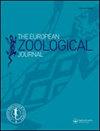Honeybee age and inoculum concentration as factors affecting the development of Nosema ceranae infection
IF 1.6
4区 生物学
Q2 ZOOLOGY
引用次数: 0
Abstract
Abstract Nosemosis is one of the most widespread honeybee diseases. Its epidemical state can be determined as panzootic. The infectious agents are the microsporidia Nosema apis and N. ceranae. Numerous substances and preparations were tested in order to find a way to combat this disease. However, methodology used in artificial infection experiments is not unique; concentrations of N. ceranae spores in inoculum vary as well as the age of honey bees when they are infected. In addition, the disease itself is still relatively poorly understood. This makes the interpretation of such research difficult. The aim of this study is to investigate the effect of bee age and inoculum concentration on the development of N. ceranae infection. Honeybee workers were collectively infected at the age of 2 and 10 days post-emergence with concentrations of 104, 5 × 104, and 105 spores/bee. While the results indicate a significant effect of both tested factors on the development of N. ceranae, the relationship is not simple, and age alters the pattern of nosemosis development in response to the given concentrations. Highlights The course and the effect of Nosema ceranae infection differed depending on bee age at the moment of infection. The development of the infection differed depending on concentration of N. ceranae spores in inoculum. Concentration of N. ceranae spores had an effect on mortality and syrup intake in 10-day-old bees. Graphical abstract蜜蜂年龄和接种量是影响蜜蜂微孢子虫感染发展的因素
鼻塞病是广泛传播的蜜蜂疾病之一。其流行状态可确定为流行性传染病。传染源为小孢子虫和蜜蜂微孢子虫。为了找到对抗这种疾病的方法,对许多物质和制剂进行了试验。然而,人工感染实验中使用的方法并不独特;接种物中蜂蜡芽孢的浓度随蜜蜂感染时的年龄而变化。此外,人们对这种疾病本身的了解仍然相对较少。这使得解释此类研究变得困难。本研究的目的是探讨蜜蜂年龄和接种量对蜜蜂蜂感染发展的影响。在工蜂出蛹后2天和10天,工蜂集体感染,孢子浓度分别为104、5 × 104和105孢子/只。虽然结果表明这两种测试因素对蜜蜂的发育都有显著影响,但这种关系并不简单,年龄改变了鼻孔病的发展模式,以响应给定的浓度。蜜蜂感染微孔虫的过程和影响随感染时蜂龄的不同而不同。感染的发展取决于接种物中蜂蜡孢子的浓度。蜂蜡芽孢浓度对10日龄蜜蜂的死亡率和糖浆摄入量有影响。图形抽象
本文章由计算机程序翻译,如有差异,请以英文原文为准。
求助全文
约1分钟内获得全文
求助全文
来源期刊

European Zoological Journal
Agricultural and Biological Sciences-Animal Science and Zoology
CiteScore
3.10
自引率
5.60%
发文量
80
审稿时长
30 weeks
期刊介绍:
The European Zoological Journal (previously Italian Journal of Zoology) is an open access journal devoted to the study of all aspects of basic, comparative and applied protozoan and animal biology at molecular, cellular, tissue, organ, organismal, population, and community-ecosystem level. Papers covering multiple levels of organization and integrative approaches to study animal form, function, development, ecology, evolution and systematics are welcome. First established in 1930 under the name of Il Bollettino di Zoologia, the journal now has an international focus, reflected through its global editorial board, and wide author and readership.
 求助内容:
求助内容: 应助结果提醒方式:
应助结果提醒方式:


